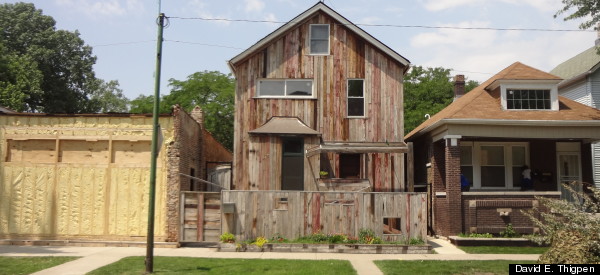The power of creative classes has long been recognized as a force for good in the life of cities, both for the beauty they create as well as for the magnetic pull they exert, drawing followers to precincts where few before them dared go.
But anyone familiar with the history of Williamsburg in New York City, Echo Park in Los Angeles, or Wicker Park in Chicago knows that the time between the arrival of the first few grungy painters and the opening of the first shop selling imported artisanal couscous is no longer measured in years, but rather in days. The classical arc from grungyfied to gentrified makes a neighborhood prettier, but are $4000 per month condos always a sign of progress?
Convinced that there is a middle way -- progress without runaway gentrification -- I am researching urban blocks and neighborhoods that are benefitting from artistic endeavor but also finding a way to balance that growth. The model they are experimenting with -- work cooperatives, real estate banks, non-profit associations -- portend futures of local, self-directed expansion and free-flowing creative exchange between old residents and new rather than commercial conquest.
In the San Francisco neighborhood of Hunter's Point-Bayview, a block of previously unconnected residents have come together around the creation of a huge community garden reclaimed from what was once a weed-choked trash heap. The Quesada Gardens Initiative now features fruit trees and tomatoes (plus visits from photo-op seeking politicians). Its success helped spawn a spectacular painted mural on a wall at the end of the block honoring the neighbors who came out from behind closed doors to become a community. What's happening in Quesada Gardens, says co-founder and organizer Jeff Betcher, isn't really about the garden, but rather, it's about the gardeners. Adjacent neighborhoods are now imitating the Quesada model rather than looking for ways to bring in boutiques.
Take a ride through the Greater Grand Crossing neighborhood on Chicago's South side and you realize only an artist would be visionary -- or perhaps crazy enough to put down roots there. GGC had three murders in June and July. The boarded-up buildings and vacant lots that greet you certainly do not scream out "buy me." But the Dorchester Project, the creation of the young visual artist Theaster Gates is midway into a rehabilitation process involving a handful of adjacent properties that he envisions as an artistic hub -- with a film theater, an art library, a performance space, a community garden and low-cost housing where artists can come to work and live.

Gates already has the film room up and running, and his neighbors on Dorchester Avenue have joined him in the rehab. Gates says he is already concerned about real estate speculators who may be circling, and sees himself as "a mediating force between the market and the community." He will keep working, he says, "until it feels like this neighborhood has what it needs to be really, really healthy." This work is animated not by a drive for money, but rather for the psychological profit of constructive social exchange.
At the Institute for the Future, a Palo Alto, California think tank where I am currently a fellow, we view what's happening in San Francisco, Chicago and elsewhere as signals of things to come. We call it "block by block creativity," and see it as an extension of the "maker" movement that is open, democratic, free and participatory.
Detroit may have grabbed headlines with its bankruptcy announcement but many other American cities are deeply in debt, too, and ripe for this kind of change. City or state resources that twenty years ago might have been poured into urban rehab are no longer available. This leaves room for creative solution-makers like Gates and the Quesada community where artistic action inspires change by helping a community see positive attributes in itself that it might not otherwise see.
Block by block creativity is self-directed and mostly financed through elbow grease. It sees art as more than just a luxury. It builds community from the bottom up, transforming a neighborhood's identity through artistic visions, and creating models of balanced community development that are human in their scale and inspirational in their view of the future. And all without a $10 cup of latte in sight.